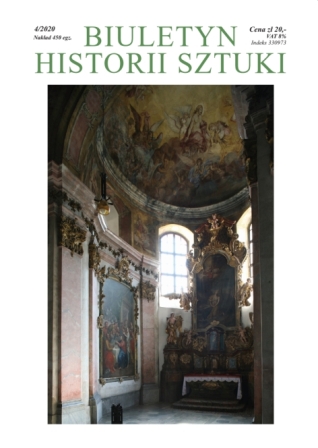Wystrój rzeźbiarski kaplicy św. Marii Magdaleny przy kościele Wniebowzięcia NMP i św. Jana Chrzciciela w Henrykowie oraz jego twórca August Leopold Jäschke
Sculptural Decor of the Chapel of St Mary Magdalene at the Church of the Assumption of the Virgin Mary and of St John the Baptist in Henryków and Its Author August Leopold Jäschke
Author(s): Artur KolbiarzSubject(s): Christian Theology and Religion, Architecture, Visual Arts, 18th Century, History of Art
Published by: Instytut Sztuki Polskiej Akademii Nauk
Keywords: August Leopold Jäschke (ca. 1709-1787); Henryków (Heinrichau) Cistercian Abbey; Henryków sculpture; Wrocław art; late-Baroque sculpture; Rococo sculpture; Baroque sculpture in Silesia; art;
Summary/Abstract: The raising and furbishing of the Chapel of St Mary Magdalene at the Cistercian Church in Henryków formed part of the last artistic offensive of the Catholic Church in Lower Silesia in the modern times, actually conducted after the region had been incorporated into the Kingdom of Prussia. It was also one of the significant artistic projects implemented in the mid-18th century by the Henryków Abbot Candidus Rieger. The preserved archival records allow to recreate the division of works on the project. Bricklaying, masonry, and carpentry were conducted mainly by local craftsmen. However, the remaining tasks were commissioned from Wrocław masters. The paintings were executed by Johann Heinrich Kynast, the stuccoes by Dominicus Merck, while the altar and woodcarving by August Leopold Jäschke (ca. 1709-1787). Little identified in literature so far, the sculptor was active for over five decades on the Sand Island, having a major impact on shaping the local Rococo fine arts. Educated most likely in the excellent atelier of Franz Joseph Mangoldt, Jäschke imitated his supposed master in figurative sculpture and in so-called ‘minor architectural elements’. He compensated for his mediocre skill at shaping figures by applying fashionable architectural concepts and extensive ornamentation. Jäschke's professional activity, territorially covering Upper and Lower Silesia, as well as the borderline of Greater Poland, constitutes an excellent touchstone of the output of the Wroc³aw artistic circles of the time of Rococo.
Journal: Biuletyn Historii Sztuki
- Issue Year: 82/2020
- Issue No: 4
- Page Range: 559-599
- Page Count: 41
- Language: Polish

